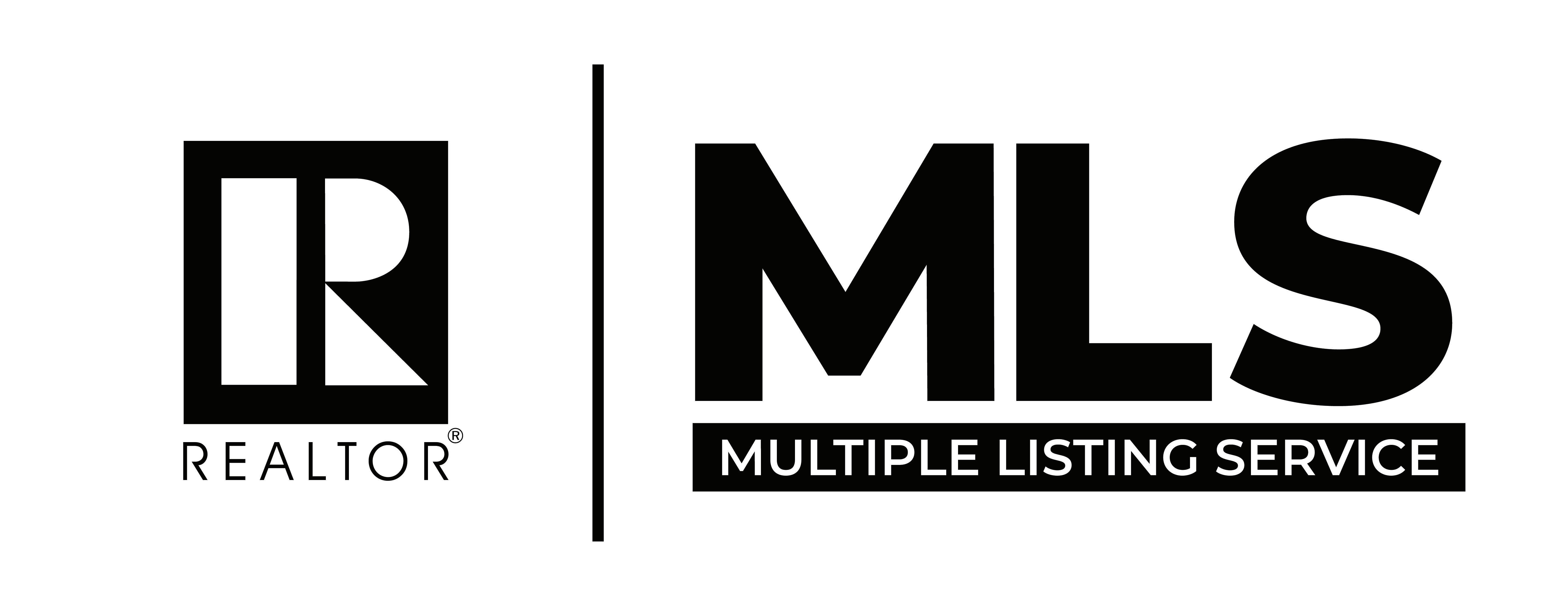Seller’s Moving Guide









Welcome to the home-selling process. Throughout this process, you can count on First American Title to guide you smoothly through your transaction and provide expert answers to your questions. We are happy to serve you.
First American Title’s professionals are proud to provide the title insurance that assures people’s home ownership. Backed by First American Title Insurance Company, your transaction will be expertly completed in accordance with state-specific underwriting standards and state and federal regulatory requirements.
First American Title is the principal subsidiary of First American Financial Corporation, and one of the largest suppliers of title insurance services in the nation. With roots dating back to 1889, we’ve served families for generations.
First American Title has a direct office or agent near you. We also have an extensive network of offices and agents throughout the United States, and internationally.
First American Financial Corporation offers more than title insurance and escrow services through its subsidiaries. Our subsidiaries also provide property data, title plant records and images, home warranties, property and casualty insurance, and banking, trust and advisory services.
So you’re planning to sell your home. You and your real estate broker have decided on a price, based on current market values, but your home may sell faster and bring a higher price if it shows well. Potential buyers will get the best impression if your home is clean, neat, uncluttered, in good repair, light, airy, fragrant, and quiet. This checklist will help you get your home ready to show.
Cleanliness signals to a buyer that the home has been well cared for and is most likely in good repair. A messy or dirty home will cause prospective buyers to notice every flaw.
Get rid of odors that may be unfamiliar or unpleasant. People are most often offended by odors from tobacco, pets, cooking, and musty or sour laundry. Fresh flowers and potpourri can be used to your advantage. Other smells that attract positive attention include fresh baked bread and cinnamon.
LET THE LIGHT IN
Raise the shades. Open the blinds. Pull back the curtains. Put brighter bulbs in all the lamps (but not bright enough to cause a glare). Bright, open rooms feel larger and more inviting. Dark rooms feel small and gloomy.
There’s nothing that improves the value of a home for a lower cost than a fresh coat of paint. And it’s so often easier to paint a room than it is to scrub it. Stick with neutral colors - off-white is the safest. Be sure to avoid black, violet, and pink.
Silence is a restful sound that offends no one. Turn off the TV and radio. Soft instrumental music is fine but avoid vocals. If necessary, close the windows to eliminate any street noise.
UNCLUTTER YOUR HOME BEFORE YOU SHOW IT
Have a garage sale. Empty closets. Throw away what you can’t sell. The less “stuff” in and around a home, the roomier it will seem.
FIX ANYTHING THAT IS BROKEN
This includes plumbing, electrical systems, switches, windows, TV antennas, screens, doors, and fences; if it can’t be fixed, replace it or get rid of it (no window screens are better than broken ones).
A buyer will make a much lower offer if your house is in disrepair and will probably still insist that everything be fixed before taking occupancy. You’re better off if you leave potential buyers no reason to offer less than you are asking.
Send them away or secure them away from the house when prospective buyers are coming. You never know if people will be annoyed or intimidated by your pets or even allergic to them. And you never want a prospective buyer to have to avoid animal droppings.
Send them to Grandma's or take them on a walk around the block. Children can be noisy and distracting to someone interested in looking at a home.
Clean around service areas/trash cans
Haul away rubbish
Straighten woodpile
Repair leaky faucets
Clean up pet droppings
Paint or varnish doors
Polish door hardware
Make sure doorbell/knocker works
Paint or replace street numbers on house
Make sure septic tank is odor free
Clean oil stains from driveway/street
Patch/reseal driveway if necessary
Plaster
Wood siding
Trim
Rain gutters
Shutters
Doors
Window frames
Glazing
Screens
Hardware
Fences/gates
Outdoor lighting
Mow/edge lawn regularly
Aerate/feed lawn
Overseed bare spots in lawn
Water lawn regularly
Remove/replace dead plants
Prune overgrown/diseased/damaged shrubs
Prune or remove shrubs/trees blocking view from windows (unless view is undesirable)
Stake up any sagging trees/shrubs
Keep flower beds free of weeds
Trim around base of trees/walls/fences
REPAIR OR REMOVE ANY BROKEN OR DAMAGED LANDSCAPE ACCESSORIES SUCH AS:
Fences
Walls Gazebos
Fountains
Trellises
Planters
Other
Replace any broken stepping stones
Adjust any sprinkler system; repair any broken/ leaky heads
Install fences or shrubs to hide any unsightly views
CLEAN/WASH
Siding
Windows
Screen
Outdoor BBQ
AC unit
Pool/Spa
Porch Lights
Carport Garage
Keep closets clean and free of clutter
Throw out or pack away non-essentials
Adjust/repair sliding doors
Lubricate sliding door hardware
Paint, if needed
Doors
Windows
Light switches
Baseboards
Chair rails
Wash lace curtains and have draperies cleaned if necessary
Remove or pull back dark curtains
Lubricate window slides (soap for wood silicon or a candle stump for metal)
Make sure doors open smoothly
Clean ceiling light fixtures
Check for cobwebs in all corners
Fix any scratches in wooden floors
Replace worn/broken flooring
Remove or replace worn carpet
Use area rugs where needed
Empty wastebaskets
Make the beds
Fluff the pillows
KITCHEN
Keep dishes and food out of sight
Clean appliances
Clean range hood, including light bulbs
Clean behind appliances
Keep floor clean
Clean light fixture
Make sure all electrical outlets work
Eliminate cooking odors
Deodorize garbage disposal, dishwasher, and refrigerator
Repair faucets
Put fresh shelf paper in cabinets
Organize cupboards
Clean out under sink
Replace garbage disposal gasket to reduce noise
BATHROOMS , Keep them spotlessly clean:
Shine mirrors
Keep wastebaskets empty and clean
Clean out cabinets and remove non-essentials
Keep fresh, clean towels on towel racks
Clean shower door – if sliding door, keep track well lubricated
Remove soap residue, mildew and mold from sink/tub/shower
Remove stains from porcelain sink tub toilet
Replace torn/moldy shower curtain
Clean tile grout
Make sure toilet flushes properly – replace mechanism if necessary
Clean exhaust fan/heater – replace if broken or noisy
Install 100-watt light bulb
Keep area clean/uncluttered
Hang up/put away tools
Clear away any cobwebs
Remove oil/paint stains from floor
Adjust tension rod to eliminate sag from overhead garage door
Lubricate/adjust/repair garage
door opener
Paint if needed
LAUNDRY AREA
Clean out area behind washer/dryer
Eliminate any mildew odors
BASEMENT
Eliminate any signs of dampness
Check for and eliminate cracks
HEATING/AIR CONDITIONING UNIT
Vacuum
Replace filter
Clean intake vent
Remove any stored items
Make sure the temperature in your home is comfortable – keep it cooler in the summer and warmer in the winter. If it’s cooler outside and you have a fireplace, a nice fire will make your home seem cozy and inviting.
Provide an exhaustive written list of the features of your home.
Know the distance to schools and shopping centers.
Refer any prospect that calls or comes by to your broker for pre-screening and pre-qualification as well as for your own safety.
Tell your real estate agent all about the home-good and bad. Let the professional decide how to handle negatives and features or highlight the positives.
We know the home buying process can be confusing. Let’s walk through a brief explanation of what happens after you sign the contract.
The signed contract and earnest money are delivered to the settlement agent (NOTE: the title company often acts as the settlement agent). Now the title order begins and information such as taxes, loan payoffs, lien search, and other information is collected.
The title search will determine the legal owner of the property and any outstanding liens and/or assessments. This search is critical to making sure the property will transfer legally to the buyer.
Over the next few weeks the following will occur: inspections, repairs (if necessary), payoffs obtained from current lenders, HOA’s, lienholders, ect, and loan document preparation. It is important the buyers and sellers are responsive to requests for paperwork and information.
Once the invoices, payoffs, statements, and loan documents are received, the settlement statement is prepared. This document includes the closing calculations and is used to inform the buyer and seller of their bottom line figures.
The closing paperwork must then be signed by the buyer and the seller. This will include documents such as the deed, settlement statement, loan documents (if applicable), and others.
All payees, including the seller, payoff lenders, real estate professionals, and others are paid according to the settlement statement.
The final documents, including the deed and loan instrument, are sent to the county recorder’s office for recordation. After recording, the deed will be sent to the buyer. The title insurance policy is sent to the buyer and the lender.
SIX WEEKS BEFORE:
Create an inventory sheet of items to move. Research moving options. You’ll need to decide if yours is a do-it-yourself move or if you’ll be using a moving company. Request moving quotes. Solicit moving quotes from as many moving companies and movers as possible. There can be a large difference between rates and services within moving companies.
Discard unnecessary items. Moving is a great time for ridding yourself of unnecessary items. Have a yard sale or donate unnecessary items to charity.
Packing materials. Gather moving boxes and packing materials for your move.
Contact insurance companies. (Life, Health, Fire, Auto) You’ll need to contact your insurance agent to cancel/ transfer your insurance policy. Do not cancel your insurance policy until you have and closed escrow on the sale.
Seek employer benefits. If your move is work-related, your employer may provide funding for moving expenses. Your human resources rep should have information on this policy.
Changing Schools. If changing schools, contact new school for registration process.
Contact utility companies. Set utility turnoff date, seek refunds and deposits and notify them of your new address.
Obtain your medical records. Contact your doctors, physicians, dentists and other medical specialists who may currently be retaining any of your family’s medical records. obtain these records or make plans for them to be delivered to your new medical facilities.
Note food inventory levels. Check your cupboards, refrigerator and freezer to use up as much of your perishable food as possible.
Service small engines for your move by extracting gas and oil from the machines. This will reduce the chance to catch fire during your move.
Protect jewelry and valuables. Transfer jewelry and valuables to safety deposit box so they can not be lost or stolen during your move.
Borrowed and rented items. Return items which you may have borrowed or rented. Collect items borrowed to others.
Plan your itinerary. Make plans to spend the entire day at the house or at least until the movers are on their way. Someone will need to be around to make decisions. Make plans for kids and pets to be at the sitters for the day.
Change of address. Visit USPS for change of address form.
Bank accounts. Notify bank of address change. Make sure to have a money order for paying the moving company if you are transferring or closing accounts.
Service automobiles. If automobiles will be driven long distances, you’ll want to have them serviced for a troublefree drive.
Cancel services. Notify any remaining service providers (newspapers, lawn services, etc) of your move.
Start packing. Begin packing for your new location.
Travel items. Set aside items you’ll need while traveling and those needed until your new home is established. Make sure these are not packed in the moving truck!
Scan your furniture. Check furniture for scratches and dents before so you can compare notes with your mover on moving day.
Prepare Floor Plan. Prepare floor plan for your new home. This will help avoid confusion for you and your movers.
Review the house. Once the house is empty, check the entire house (closets, the attic, basement, etc) to ensure no items are left or no home issues exist.
Sign the bill of lading. Once you are satisfied with the mover’s packing your items into the truck, sign the bill of lading. If possible, accompany your mover while the moving truck is being weighed.
Double check with your mover. Make sure your mover has the new address and your contact information should they have any questions during your move.
Vacate your home. Make sure utilities are off, doors and windows are locked and notify your real estate agent you’ve left the property.
Pets have many needs which become complicated when moving from one place to another. This moving checklist for pets lists all of the hurdles of pet relocation.
Visit the veterinary office. Make sure to pick up your pet’s medical records before leaving your former home. Have your pet vaccinated and stock up on any pet meds needed until you settle into your new home. If your move is difficult for a pet, ask your vet to prescribe sedatives to be given on and around moving day.
Update your pet ID tags. Have new tags created with the pet’s name and your new contact information.
Check licensing laws. Contact the proper authority in your new location for information on pet licensing requirements. Secure a valid license for your pet.
Temporary residence. Your pet is best kept away from all your moving day activities. They’ll likely get agitated when seeing items being removed from the home. Have pets stay with friends or board them in a kennel for the day.
Transporting your pet. If you are driving a car, make sure to take plenty of breaks to minimize the chance your pet gets carsick. If your pet is temperature or moving sensitive, cover their cage with a blanket and keep them in a temperature regulated environment. If your pet becomes easily stressed, consider giving them sedatives.
Settling into your new home. Once you are somewhat settled into your new home, let your pet roam around and get used to the new space. Since pets will initially be confused about their new surroundings, keep them confined or leashed until you are certain they will not run away from home. Pets that are stressed and confused can be kept confined in a small room with their bed, toys, and other items.
If your pet has a microchip, contact the company and provide your updated contact information.
Flying with your pet. If your move requires flying with your pet, check with your airline to see what requirements they may have for pet travel. Try to choose nonstop flights since pets may become unsettled by air pressure changes and airport handling.
Moving pets internationally. Those moving to another country should check with that country’s embassy or consulate about any quarantine or health issues related to pet moving. If moving a bird, make sure to secure proper documentation required by the Convention on International Trade in Endangered Species.
Moving fish. Your local pet store is the best resource for getting information on relocating fish. Depending upon your move, they will have the knowledge and supplies needed for moving fish.
Your family’s move can be an exciting time for you and your children. It can also be a stressful and sad time. Moving represents change which can be difficult at any age. Sharing and reading picture books about moving is a great way to prepare kids for what’s ahead and give voice to the range of feelings that they may be experiencing.
Most children have an adventurous, curious side to them. Try appealing to this side when telling them that the family is moving. This way, you’ll help them view the move as an experience that can lead to exciting discoveries.
Even in their excitement, young children will feel sadness at leaving familiar people, places and activities. Help your kids with concrete ways to make the “old place to the new place” transition. Following are some tips for you to help your young children cope with the move.
– Explain where and why you are moving.
– Highlight benefits of moving that your kids can understand.
– Use maps and pictures to help illustrate where you are going and make the move more concrete.
– Reassure them that their life won’t change dramatically
Moving to a new place can affect a child’s behavior and emotions. Toddlers and young children are egocentric. When you show stress, they may think it’s because of something they did. Be mindful of your emotions and actions in their presence and give them plenty of reassurance.
Younger kids may be the most eager members of your moving team. Let your kids help by assigning tasks you know they can handle.
– Make a list of all the questions your child has about moving.
– Create an address book.
– Be sure to allocate enough time to say your special goodbyes.
– Make a last visit to their favorite places.
– Plan their new bedroom.
FROM PARENTS WHO HAVE BEEN THERE
– Keep your kids in the loop on important moving information.
– Visit the new school and community before you move.
– Try to keep things and routines familiar.
– Set up a toddler’s new room similar to their old one.
– Think about volunteering at school. It might be nice for your child to have a reassuring presence in an unfamiliar environment.
Here’s a list of people, businesses & organizations who will need to know you’ve moved to a new location.
THE ESSENTIALS :
Request a “Change of Address” form at a USPS post office
Friends and family
FINANCIAL INSTITUTIONS:
Banks and credit unions
Credit card companies (including department store cards)
Lenders (mortgage, home equity, auto, student loan)
Insurance companies (health, renters, auto, home, medical, dental, disability, life)
Retirement (pension plans, 401K, retirement accounts, Social Security, Veterans Affairs)
Investments (investment agencies and brokers)
UTILITIES:
Phone services (cellular, land line)
Electric
Heating Oils (gas, oil, propane or other fuels)
Water (water delivery, water treatment)
Sewer
Waste Disposal
Internet (land line, wi-fi and satellite)
Television (cable or satellite TV)
GOVERNMENT OFFICES:
Department of Motor Vehicles
IRS
Passport Office
Veteran Affairs
Unemployment Office (if you are currently receiving unemployment benefits)
JOBS:
Notify the Human Resources department
Update your personal marketing materials (business cards, websites, resumes)
Employment agencies (temp agencies and recruiters)
Professional Memberships (licensing and certification boards)
Past employers (for W-2)
HEALTH:
Physicians (doctors, dentists, optometrists, etc.)
Pharmacies
Health insurers (HMOs, DMOs, agencies and brokers)
SERVICE PROVIDERS:
Cable company
Phone company
Housecleaning services
Delivery services
Accountants
Childcare (day-care center, baby sitters)
Lawn care service
Veterinarian (including pet groomer, pet sitters, and microchip service)
Pool services
Lawyers
AUTOMOBILE:
Auto insurers (insurance agencies and brokers)
Auto lenders (car dealership, bank or loan place)
Department of Motor Vehicles (changing your vehicle registration)
Membership clubs (AAA or similar)
Parking permits
Warranty (if a car warranty is still in place)
Toll pass (Fast Lane, EZ Pass)
MEMBERSHIPS:
House of worship (churches, synagogues, mosques)
Health clubs
Community groups (PTA, neighborhood associations, civic clubs)
Children’s extracurricular activities (dance classes, music lessons, sport clubs)
Social clubs, community centers
SUBSCRIPTIONS:
Newspapers
Magazines (The USPS will only forward magazine subscriptions for two months)
Movie subscriptions (streaming services or other)
Book and music clubs
Mail order houses
OTHER:
Air miles reward program Register to vote!
Update personal websites Children’s schools
